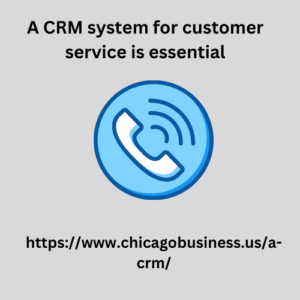Understanding your customers is the cornerstone of any successful business strategy. Customer profiles, also known as buyer personas, paint a detailed picture of your ideal customer, allowing you to tailor your marketing, sales, and product development efforts for maximum impact.
This article delves into the world of customer profiles, explaining their purpose, benefits, and the different elements that make them valuable tools. We’ll explore various methods for creating accurate customer profiles and using them to achieve your business goals.
What is a Customer Profile?
A customer profile is a detailed document outlining the characteristics, needs, and behaviors of your ideal customer. It goes beyond basic demographics like age and gender, encompassing psychographics (attitudes, values, and interests), buying habits, and pain points (challenges they face).
By creating customer A CRM system for customer service is essential profiles, you gain a deeper understanding of:
- Who your ideal customer is: This helps you focus your marketing efforts on the right audience, avoiding wasted resources spent on attracting irrelevant customers.
- What motivates your customers: Understanding their needs and desires allows you to craft compelling messaging and develop products or services that resonate with them.
- How your customers make decisions: Knowing their buying journey helps you create targeted marketing campaigns that guide them through the sales funnel.
Benefits of Using Customer Profiles
Customer profiles offer a multitude of benefits for businesses of all sizes:
- Enhanced Marketing Strategy: Targeted marketing messages that speak directly to your ideal customer’s needs are more likely to resonate and drive conversions.
- Improved Sales Process: By understanding your customer’s pain points and buying behavior, your sales team can tailor their approach for better results.
- Product Development Focus: Customer profiles guide product development by highlighting the features and solutions your ideal customer truly needs.
- Personalized Customer Experience: Customer profiles empower you to personalize your interactions with customers, fostering stronger relationships and loyalty.
- Data-Driven Decision Making: Customer profiles provide valuable data that informs strategic decisions across all aspects of your business.
Elements of a Comprehensive Customer Profile
A strong customer profile incorporates various elements to paint a well-rounded picture of your ideal customer:
- Demographics: Basic information like age, gender, location, income, and education level.
- Psychographics: Values, interests, personality traits, lifestyle choices, and attitudes.
- Needs and Pain Points: The challenges your ideal customer faces and the solutions they seek.
- Goals and Aspirations: What your ideal customer hopes to achieve and how your product or service can help them get there.
- Buying Habits: Research habits, preferred channels for information gathering, preferred communication methods, and decision-making processes.
- Tech Savvy: Level of comfort with technology and preferred online platforms.
Techniques for Creating Effective Customer Profiles
There’s no one-size-fits-all approach to creating customer profiles. Here are some effective methods:
- Market Research: Conduct surveys, focus groups, or social media listening to gather insights directly from your target audience.
- Customer Data Analysis: Analyze existing customer data from sales records, website analytics, and customer service interactions.
- Competitor Analysis: Study your competitors’ target audience and messaging to identify potential gaps in the market.
- Customer Personas Development: Create fictional representations of your ideal customer based on the gathered information.
Putting Customer Profiles into Action
Once you have developed comprehensive customer profiles, here are some ways to leverage them for success:
- Content Marketing: Craft targeted content that addresses your customer’s specific needs and interests.
- Social Media Marketing: Tailor your social media strategy to the platforms and content your ideal customer prefers.
- Product Development: Use customer profiles to prioritize features and functionalities that resonate with your target audience.
- Sales Enablement: Equip your sales team with information about customer needs and buying behaviors to close more deals.
- Customer Service: Personalize customer service interactions based on the customer’s profile.
Conclusion
Customer profiles are powerful tools that unlock a deeper understanding of your target audience. By building accurate and detailed profiles, you can create a winning business strategy that resonates with your ideal customer, driving growth and success. Remember, customer profiles are living documents, so continuously refine them based on new data and customer interactions.
